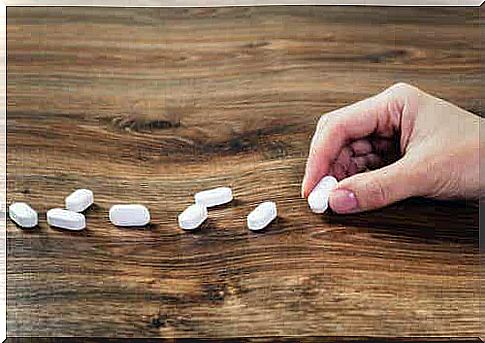Is It Carpal Tunnel Syndrome Or Arthritis?

Carpal tunnel syndrome and arthritis are two conditions that people often confuse. However, the first is a compression of the median nerve at the wrist, while the second is a localized inflammation in the joints, accompanied by severe pain and swelling.
That’s an understandable mistake, because there are certainly similarities between the two conditions, especially when it comes to treatment. Today’s article will detail their symptoms, causes, and possible treatments, so read on.
Carpal tunnel syndrome
The symptoms of this condition result from the compression of the median nerve that runs through the wrist. From an anatomical point of view, it crosses a passage whose walls are formed by bones and ligaments, the so-called ‘carpal tunnel’.
Under the influence of certain conditions which we will mention below, the free space in the tunnel can decrease and affect the median nerve. This nerve can then trigger a series of nerve impulses that lead to abnormal sensations such as tingling and weakness.
It usually occurs in people who do repetitive manual labor, so medicine considers it an occupational disease. In published research (Spanish link) the incidence of carpal tunnel syndrome has been set at 4.2 cases per 100,000 employees.
Arthritis

As the name suggests, arthritis is an inflammatory process of the joints. There are dozens of different forms, each with its own risk factors and treatments.
Rheumatoid arthritis is one of the most common forms. It is a chronic inflammatory disease caused by the autoimmune system. What this means is that the body identifies the tissue as ‘foreign’ and gradually destroys it. The cells and proteins of the immune system are a vital part of this process.
This disease is more common in women and the average age of diagnosis is around 40 years. The EPISER study stands out among many other studies and indicates a prevalence of the disease of 0.5%.
Symptoms of Carpal Tunnel Syndrome and Arthritis
One can clearly distinguish the clinical manifestations of both diseases, especially on the basis of the presence of joint pain and swelling. Below we will take a closer look at the different symptoms of both conditions.
Symptoms of Carpal Tunnel Syndrome
The median nerve is sensitive so that the symptoms resulting from its compression correspond to abnormal sensations. However, pain is not common with the condition.
People with these symptoms usually complain of progressive tingling or numbness. The affected area extends from the wrist to the ring finger and then to the thumb.
These symptoms, together with the characteristic weakness, can lead to great difficulties in carrying out daily activities, including outside the work environment. This includes driving, cooking, washing and writing.
Symptoms of Arthritis
The symptoms that occur with arthritis depend largely on the type of arthritis, although they are usually classic manifestations of inflammation. It includes complaints such as:
- pain.
- swelling.
- redness.
- increased temperature of the affected area.
Some types of arthritis are associated with stiffness, especially in the early morning hours. A similarity with carpal tunnel syndrome is the difficulty in performing daily activities. In arthritis, however, this is usually due to the intense pain.
Untreated patients with rheumatoid arthritis often end up with complex joint deformities that significantly limit their quality of life. A deviation of the fingers is the most common problem.
Causes of Carpal Tunnel Syndrome and Arthritis
Arthritis is usually a result of genetic and environmental factors. For example, people with a family history of rheumatoid arthritis are more susceptible to the disease. The same goes for people who smoke a lot or who have had infections in their youth.
Carpal tunnel syndrome has many associated risk factors, many of which are exacerbated by certain work environments. Being female, having chronic diseases such as diabetes mellitus and obesity, writing regularly, and certain anatomical factors are the most relevant risk factors.
Arthritis
You may not know it, but arthritis can cause carpal tunnel syndrome. As we have said before, one of the complications of this disease is joint and bone deformities due to inflammatory reactions.
When this happens around the carpal tunnel, it increases the chances of it narrowing and compressing the median nerve. As a result, symptoms similar to both diseases will appear.
What are the treatments?
The goal of medical treatment in both cases is to reduce the symptoms and associated inflammation. However, the underlying cause usually remains. In the case of carpal tunnel syndrome, there are surgical interventions that can definitively fix the clinical picture. We tell you more about it below.
Carpal tunnel syndrome
In the beginning, the doctor may suggest basic measures to reduce the symptoms in mild cases. This includes applying cold compresses and resting the wrist.
However, it may be necessary to immobilize the involved joints and establish pharmacological treatment if these are ineffective. The latter consists of administering non-steroidal anti-inflammatory drugs (NSAIDs) and corticosteroids.
Finally, there are surgical options focused on nerve decompression. This is usually done by a hand surgeon and may or may not be done endoscopically.
Arthritis

Some of the medications used in carpal tunnel syndrome may also be helpful in arthritis. This is the case with NSAIDs (such as ibuprofen) and corticosteroids.
People with rheumatoid arthritis may benefit from taking disease-modifying antirheumatic drugs (DMARDs). DMARDs are also used in other diseases, especially ankylosing spondylitis and systemic lupus erythematosus.
see a doctor
You should see a doctor if you experience any of the above symptoms. Early diagnosis and timely treatment are fundamental pillars for an appropriate solution to the medical condition. This of course also reduces the risk of permanent complications.
Carpal tunnel syndrome and arthritis are similar but not the same
As you can see, both conditions are distinctly different. The medicines used are similar, but do not self-medicate as the side effects can be harmful. If you have any of the above symptoms, see your doctor so he or she can refer you to a specialist.









